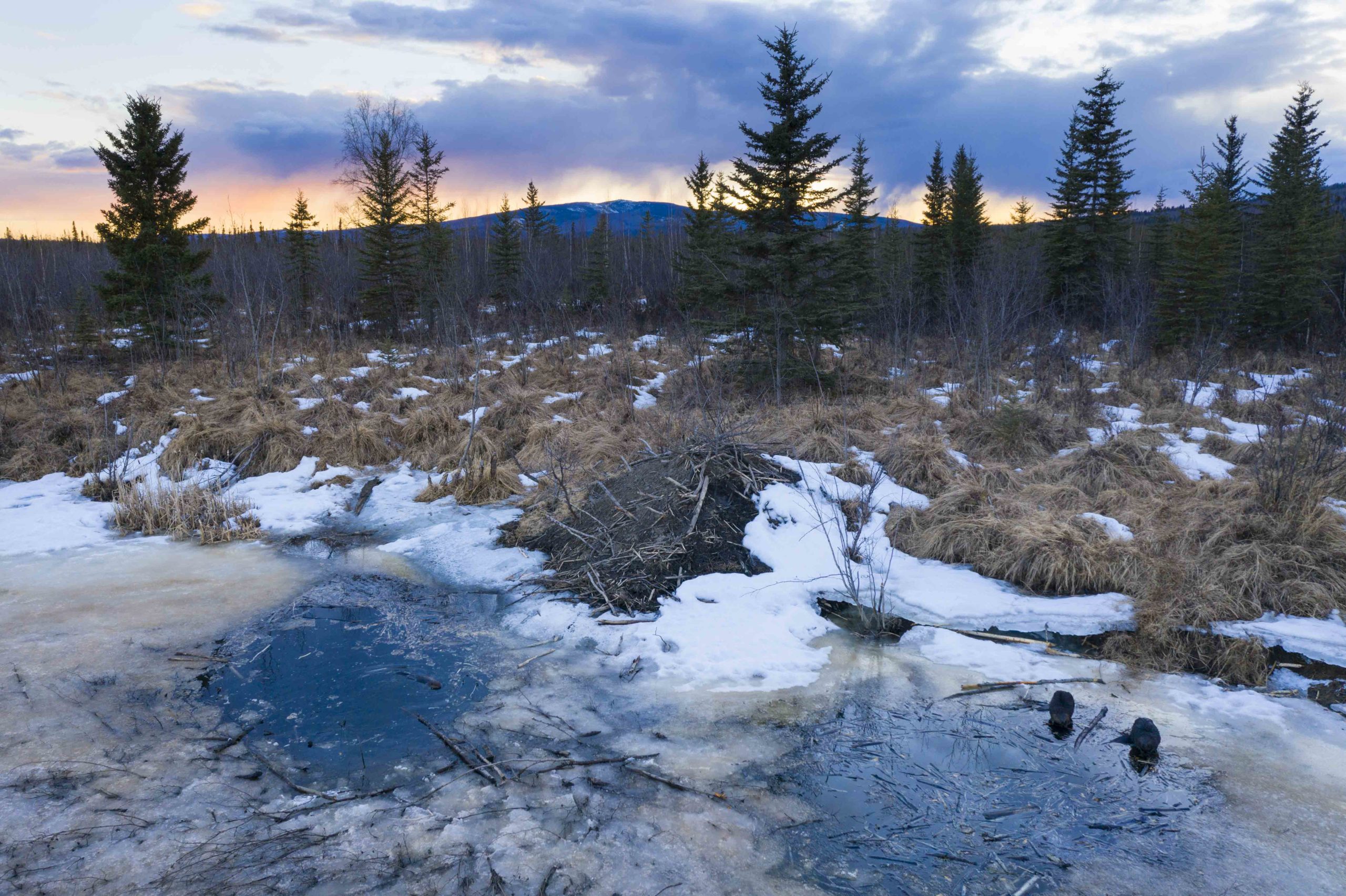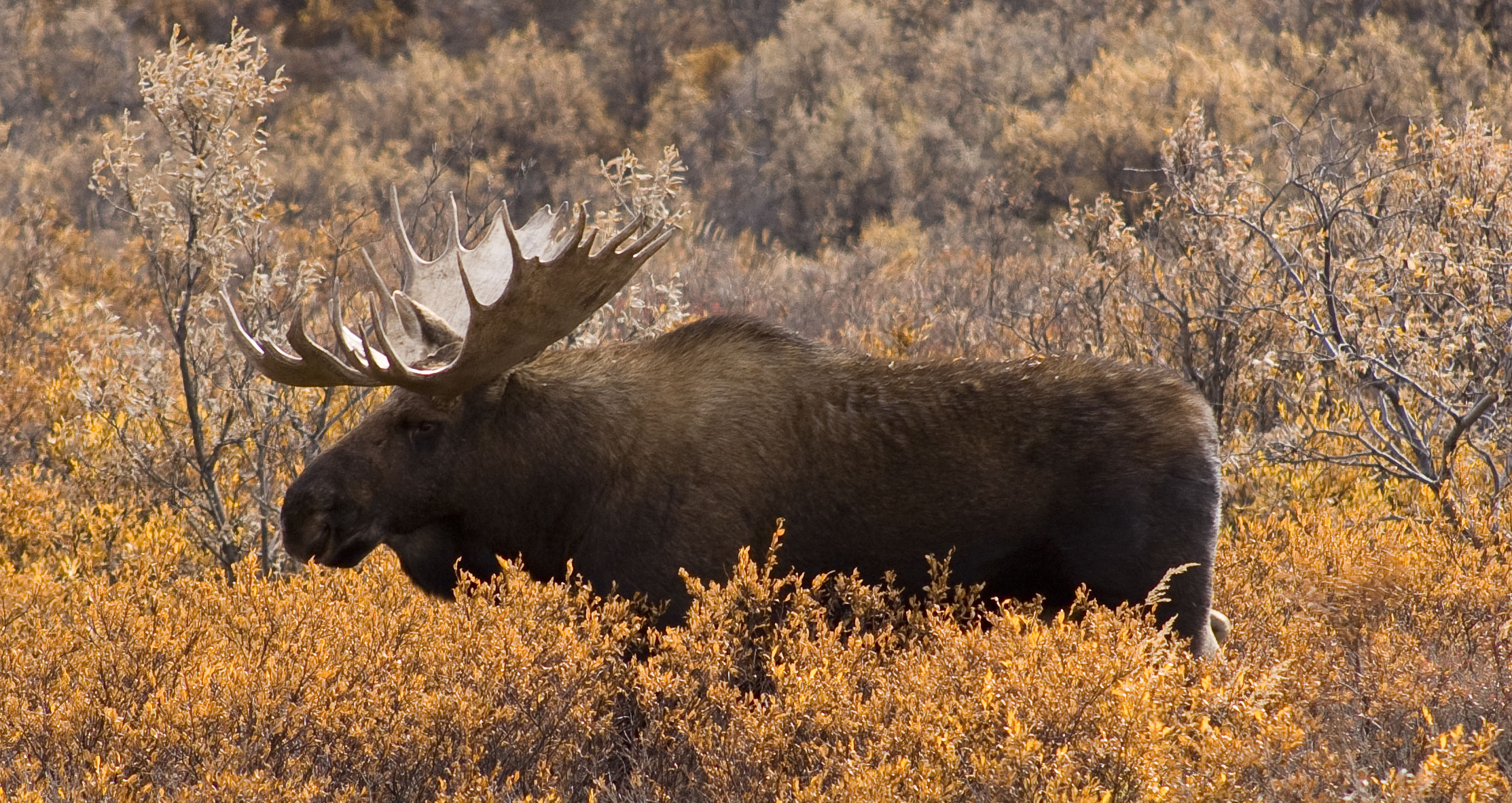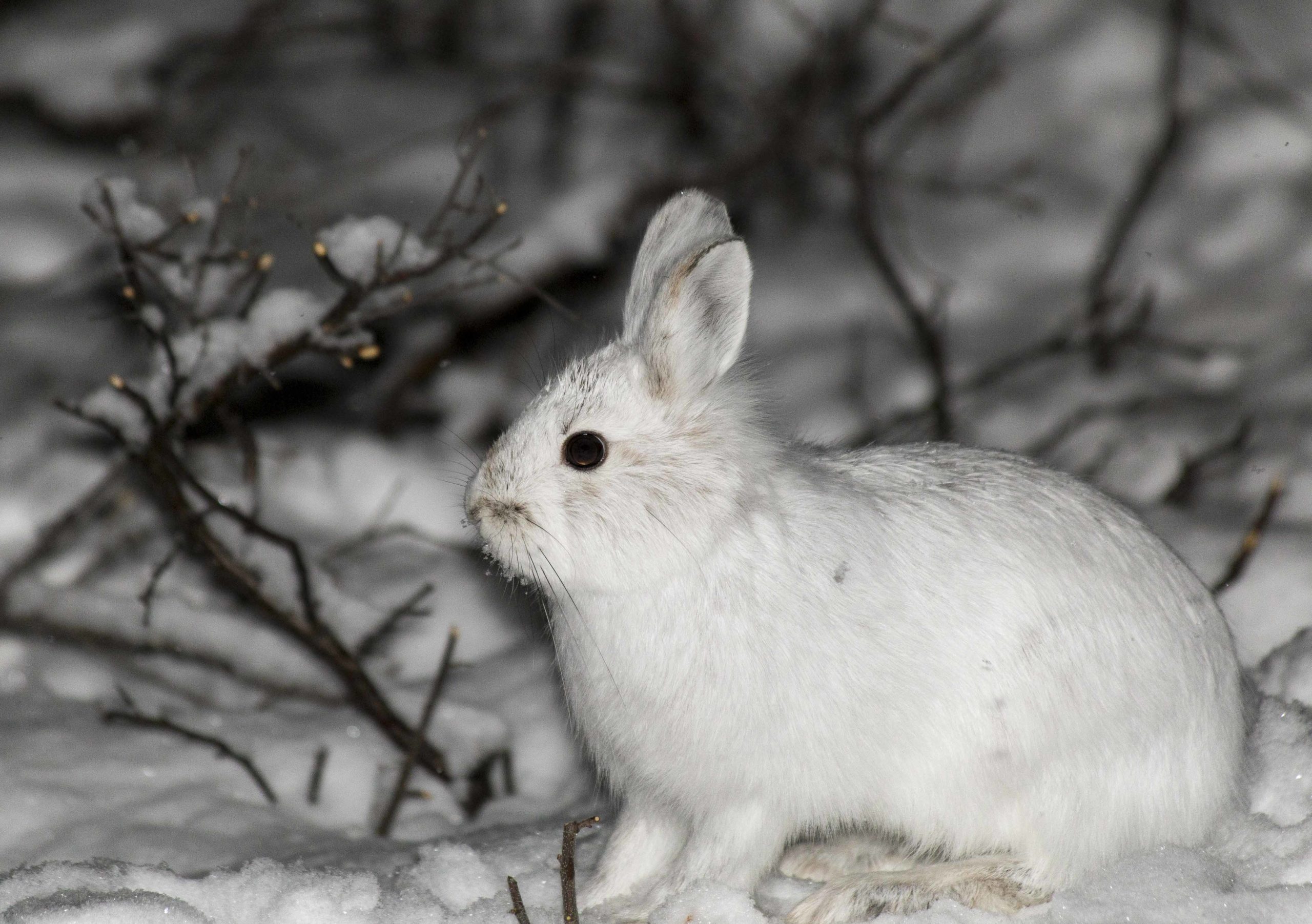Beavers are booming in some parts of the Arctic — and speeding up changes to the tundra
“Beaver-driven engineering” is moving north, altering Arctic ecosystems — and probably accelerating climate change.

As the Arctic warms and woody shrubs take root in what was once open tundra, animals more common to the boreal forest are taking advantage of the transformation.
Some of those newcomers, it turns out, are themselves exacerbating the transformation caused by warming.
In less than two decades, beavers swarming one area of Arctic Alaska have increased the number of dams by about 5,000 percent, according to a newly published study that uses satellite imagery to track the changes. Over the same period, the study found an increase in surface water in the areas, especially in water bodies where beavers built their dams.
The study isn’t the first in Alaska to document such changes. In 2018, scientists working in the same area found that the spread of beavers into the tundra was “like hitting the landscape with a hammer.”
In the area covered by the new study, a 100-square-kilometer section around the hub community of Kotzebue on the Chukchi Sea coast in Northwest Alaska, the number of dams jumped from two in 2002 to 98 in 2019 — and the amount of surface water increased by 8.3 percent in the same period, according to the study. About two-thirds of that increase in the surface area came from water bodies influenced by beavers and their woody structures, the study found.
The result, in the words of lead author Ben Jones of the University of Alaska Fairbanks, is “beaver-driven engineering.”
“Once beavers come onto the scene, they have the ability to really influence the surfacewater systems,” he said.
[‘Tundra be dammed’: Beavers are following shrubs into Arctic tundra landscapes]
In a region with ice-rich permafrost, the expansion of surface water has a lot of ripple effects. Most of the water bodies are thermokarst lakes and ponds — sites filled with meltwater from what used to be permafrost ice. So as lakes and ponds expand, more water hits the permafrost, carrying warmth and triggering more thaw.
In that way, beavers are accelerating the thaw caused by climate change, Jones and his colleagues found. But up to now, beaver engineering hasn’t really been factored into calculations about what climate warming is doing and will to Arctic landscapes. That should change, the study concludes: “Beavers should likely be incorporated into models of landscape change in permafrost regions and be considered when interpreting surface water changes in Arctic and Boreal systems.”
The study area uses fine-resolution satellite imagery — with details as small as 40 centimeters — to track the progress of beaver dam expansion. “It gives us the ability to actually map beaver dams on the ground from space, which is pretty cool,” Jones said.
While most of the imagery was available for the 100-square-kilometer area that is the main focus of the study, there was also some imagery for the wider area. In a 430-square-kilometer swath covering the northern part of the Baldwin Peninsula, beaver dams increased about four-fold in number from 2010 to 2019, from 94 to 409, based on that more limited imagery record, said the study, which is published in the journal Environmental Research Letters.
The northward expansion of beavers is linked to multiple warming-related trends, said study author Ken Tape, a UAF ecologist who has been studying the northward expansion of shrubs and shrub-dependent boreal animals like beavers and moose.
Temperatures are warming, winters are getting shorter, enabling woody shrubs to sprout, Tape said. And there is more snow and less freeze in water bodies, enabling more overwinter survival for beavers, he said.
Expect beaver presence to continue to grow in Arctic Alaska, especially in the northwestern area where the animal population has boomed, he said.
The thermokarst lakes dotting the terrain go through cycles of expansion and drain, with or without the assistance of beaver dams. The depressions left after drain events become ideal spots for shrubs to sprout and for shrub-affiliated animals to settle.
“They’re like boreal oases,” Tape said. “We’re dotting the tundra landscape with these oases,” Tape said
The beavers’ presence has spurred complaints from people in the region — chiefly about impacts to boat travel and, when terrain gets flooded, impacts to travel by snowmobile.
There are also worries about beavers’ effects on fish. But those can be mixed, Tape said. Research on Lower 48 beavers shows more positives than negatives for fish habitat, he noted. It is still too early to judge the effects in Arctic Alaska, but there may be an enhancement of fish diversity, with better conditions for fish like salmon, though a reduction in quality of habitat for Arctic-specialist species.
Water quality is also a concern. The intestinal malady Giardiasis, caused by parasite infection, even bears the nickname “beaver fever,” Giardiasis risks are increasing as beavers and muskrats expand northward, Alaska health experts have warned.

Moose are on the move, too
The northward expansion of moose may seem less dramatic for now, but big changes are expected in the future.
Their farthest north toehold is around the Colville River Delta, the only spot along the coastline of the North Slope where moose are currently found, according to the Alaska Department of Fish and Game. But that northernmost region of Alaska is destined to become a much friendlier place for moose, thanks to the spread of shrubs that is inevitable, according to research by another UAF scientist who has been working with Tape.
Even if global carbon emissions are controlled so that they remain flat by mid-century, the amount of moose habitat will double by the end of the century, according to research led by Jiake Zhou, of UAF’s Institute of Arctic Biology.
“Even if you stopped CO2 emissions at zero at the moment, warming will still continue for some time,” said Zhou, whose study was published this month in the journal Global Climate Change.
Encroachment of shrubs into tundra landscapes is well-documented. A study recently published in the journal Global Ecology and Biogeography found that woody plant cover in Arctic tundra regions around the world has increased by 20 percent in the past 50 years.
Zhou’s study used 19 years of moose-location data, information from field studies of vegetation and climate models.
On Alaska’s North Slope, as in elsewhere in Arctic tundra regions, woody shrub growth is pushing northward along riverine areas, and notably along the Colville. So, Zhou said, that is where moose are found, he said.
“If there’s no shrubs, no moose,” he said.
As warming continues, the shrubs will fill in the spaces between what is now fragmented moose habitat, Zhou’s study found. When habitat is better connected, moose are set to thrive.
The expansion of moose might be helpful to Arctic residents who could lose access to important subsistence food species such as caribou and whales and other marine mammals as climate warming continues, Zhou said. “Moose are a good alternative,” he said.
Caribou are particularly vulnerable to warming conditions. Advancing shrubs displace the lichens and other tundra plants that caribou need, and increasingly frequent rain-on-snow events coat the ground with ice barriers, making it hard for caribou to reach their food and Continued warming might put North Slope residents’ access to other traditional foods
“In a general sense, caribou is the loser and moose is the winner,” Zhou said.

There is a caveat to Zhou’s calculation of moose habitat more than doubling: Arctic moose have competition from other animals for the shrubs they eat.
Just as moose do, snowshoe hares like to feed in the riparian areas where shrubs have grown tall, Zhou and his colleagues found in a previous study. For that study, published in 2017, Zhou and his research partners rafted down three Arctic Alaska rivers where shrubs and shrub-eating animals are known to have expanded, the Nigu, Etivluk and Colville rivers. They tracked feeding patterns of ptarmigan, snowshoe hares and moose and found a lot of overlap between the latter two.
“It’s kind of odd. Moose are these huge, big animals and snowshoe hares are these kind of tiny creatures,” he said. Yet they prefer the same type of tall willows for eating and for hiding from predators, he said.